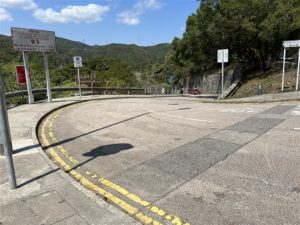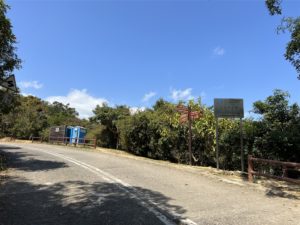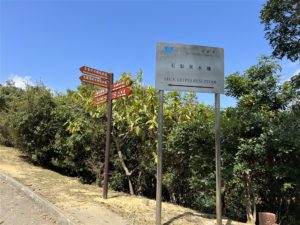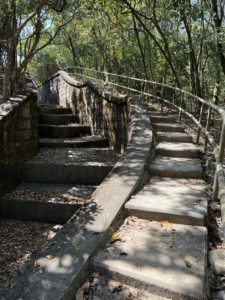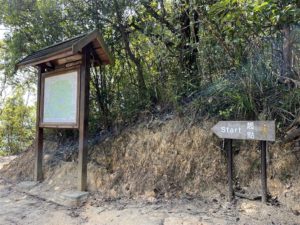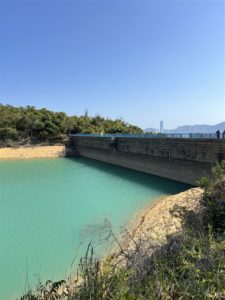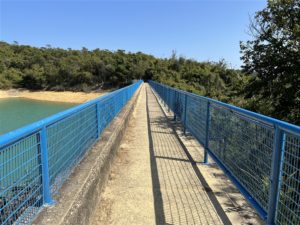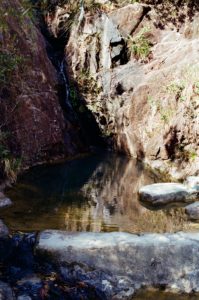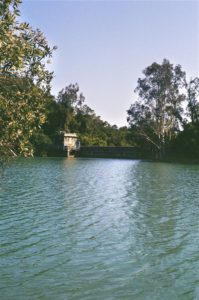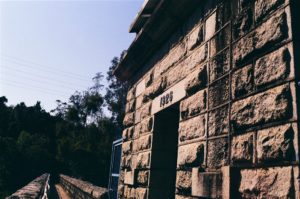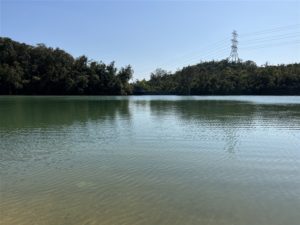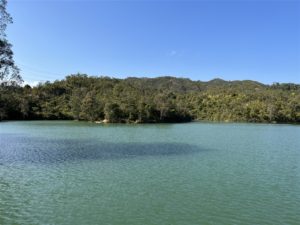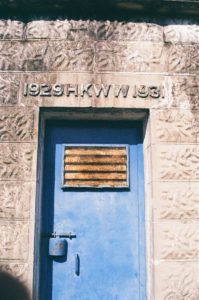A Two-Loop Walk at the Shek Lei Pui Reservoir and Kowloon Reception Reservoir
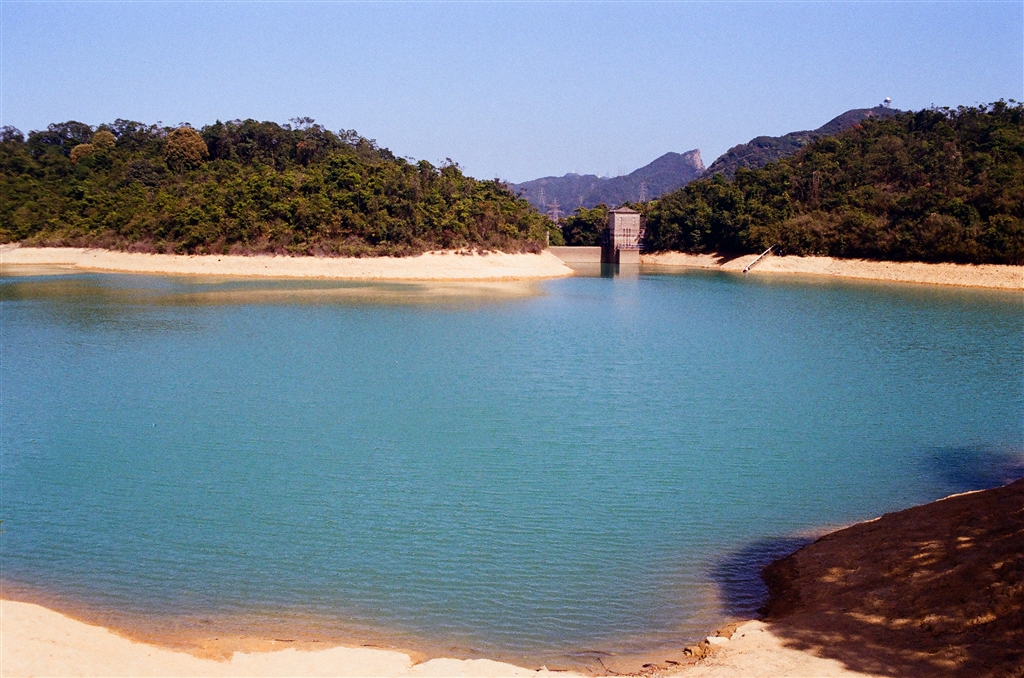
We are finally seeing sunny days in Hong Kong and I seized the day for a short walk. The itinerary was originally just the loop at Shek Lei Pui Reservoir. But I decided to do a further loop at the Kowloon Reception Reservoir in the south to clock in more exercise. I ended up seeing all of the four water reserves in the Kowloon Group of Reservoirs.
The Trail
As with all walks in the Monkey Hill area (properly named Kam Shan Country Park), I entered the trail at Golden Hill Road. This path leads you through the Kowloon Reservoir Dam and then onto the mountainous areas.
Photos: Left – the entrance into the Kam Shan Country Park via Golden Hill Road from Tai Po Road.
Middle and right – You will see signs pointing to the Shek Lei Pui Reservoir after passing the first pavilion.
I passed the first pavilion, and continued on a gentle incline on Golden Hill Road. Within five minutes after the first pavilion, I came across the signs that mark the entrance into the Shek Lei Pui Reservoir loop.
Keep on going until you reach this crossroads. I took the path to the right, which is the recommended starting point for the Shek Lei Pui Reservoir walk.
I took quite a number of detours to see the views of the waters at the shore.
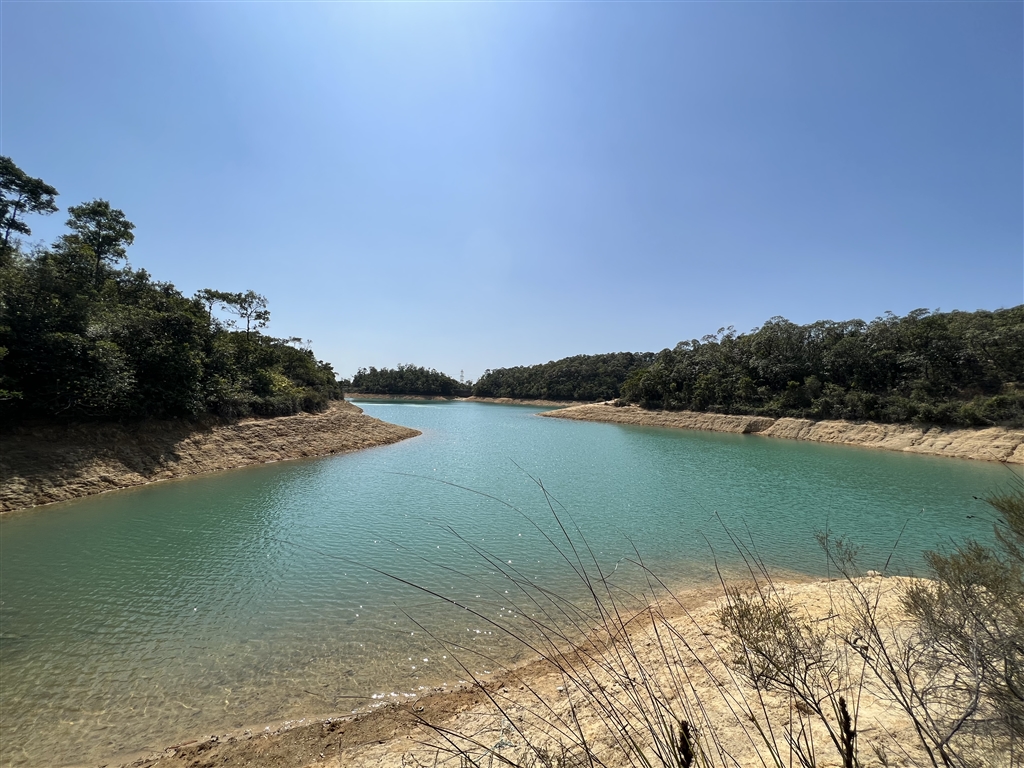
Then I reached this point right before entering the dam of Shek Lei Pui Reservoir.
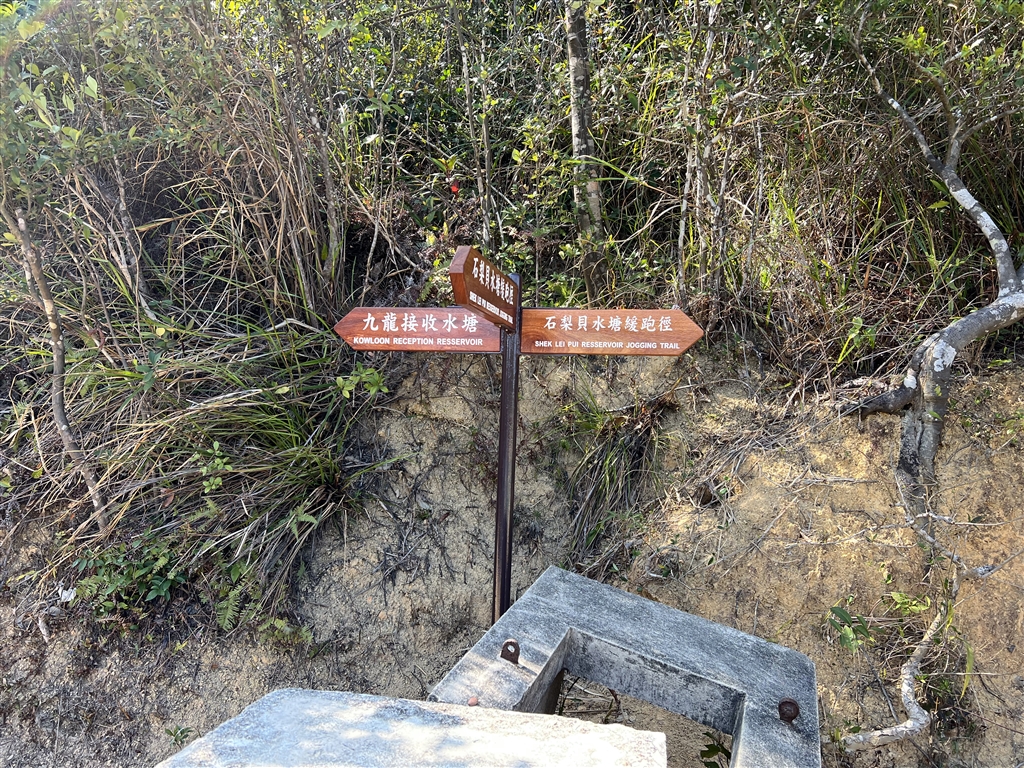
This is the sign pointing to the Kowloon Reception Reservoir direction. Before I headed down that path, I did go through the dam of Shek Lei Pui Reservoir for picture-taking. Looking south, there are views of the Kowloon skyline.
I then headed back to the road signs and chose the path going to Kowloon Reception Reservoir. It goes downward for about ten minutes or so. Once reaching the trail at the Kowloon Reception Reservoir, again I took the path to the right and started my loop.
Photos: Views of the Kowloon Reception Reservoir
Eventually, I exited the Kowloon Reception Reservoir, and headed left on Cheung Yuen Road to go back to the parking lot. On my way, I passed by the Kowloon Byewash Reservoir, the following are the views.
The Dam of the Kowloon Byewash Reservoir was, surprisingly, quite a grand view.
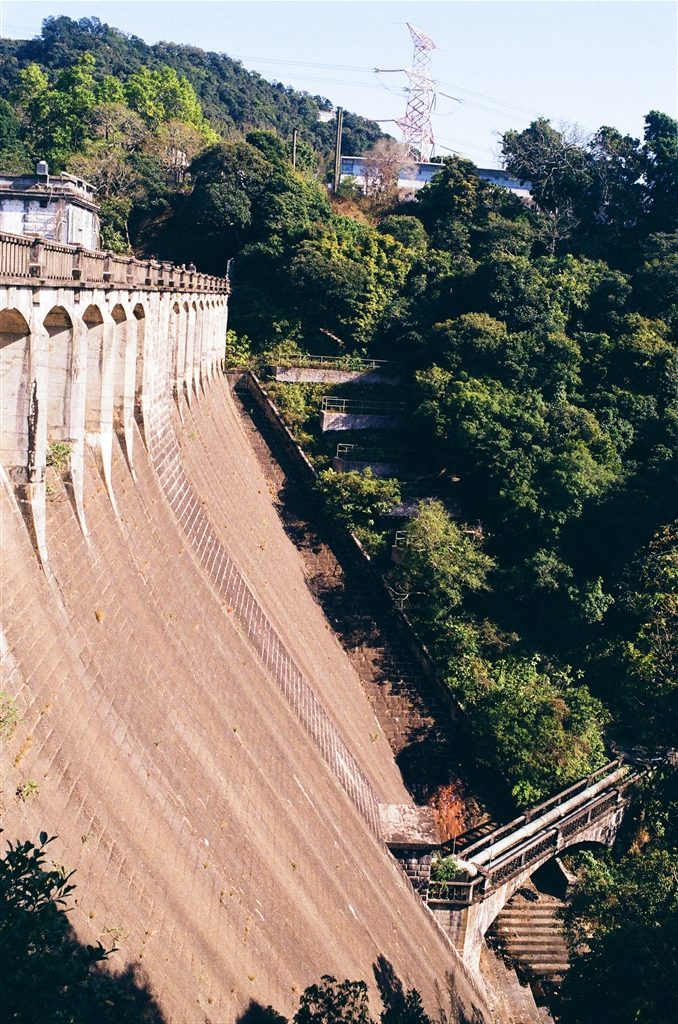
In short, this path will enable one to see all the water reserves in the Kowloon Group of Reservoirs. Further north, there is a trail on Wilson Trail Section 6 that goes around the Tail of the Kowloon Reservoir.
History of the Kowloon Group of Reservoirs
The Kowloon Reservoir is probably not as well-known as the general area that it is in, which is Monkey Hill, as it is fondly known by the locals of Hong Kong. The Kowloon Reservoir was the first of the Kowloon Group of Reservoirs to begin service, in 1910. The group consists of the Kowloon Reservoir, the Shek Lei Pui Reservoir (1925), Kowloon Reception Reservoir (1926), and the Kowloon Byewash Reservoir (1931).
The Kowloon Reservoir, despite its name, is actually the first reservoir in the New Territories. Together, this group of reservoirs has a capacity of 2.9 million cubic metres.
Gentle Reminders
This trail is overall a very easy walk. I took my time, did my detours and it only took me 2.5 hours. Do mind the resident monkeys in the area. Never take out anything that resembles plastic from your bags. The sight of plastic bags indicate to them that there is food and they will not shy away from grabbing them. On this walk, there had been no monkeys once I entered the Shek Lei Pui Reservoir loop.
How to Get There
Bus Route 81 and 72 both stop at the Shek Lei Pui Reservoir Stop on Tai Po Road. Once off the bus, walk toward the Shatin direction to reach the entrance into Kam Shan Country Park on Golden Hill Road.
By private car, there is a parking lot on Tai Po Road across from the Shek Lei Pui Reservoir Bus Stop. After parking, you must head up the overpass in order to cross the street to reach the entrance to Kam Shan Country Park.
Sources
The Water Supplies Department, Kowloon Reservoir.

